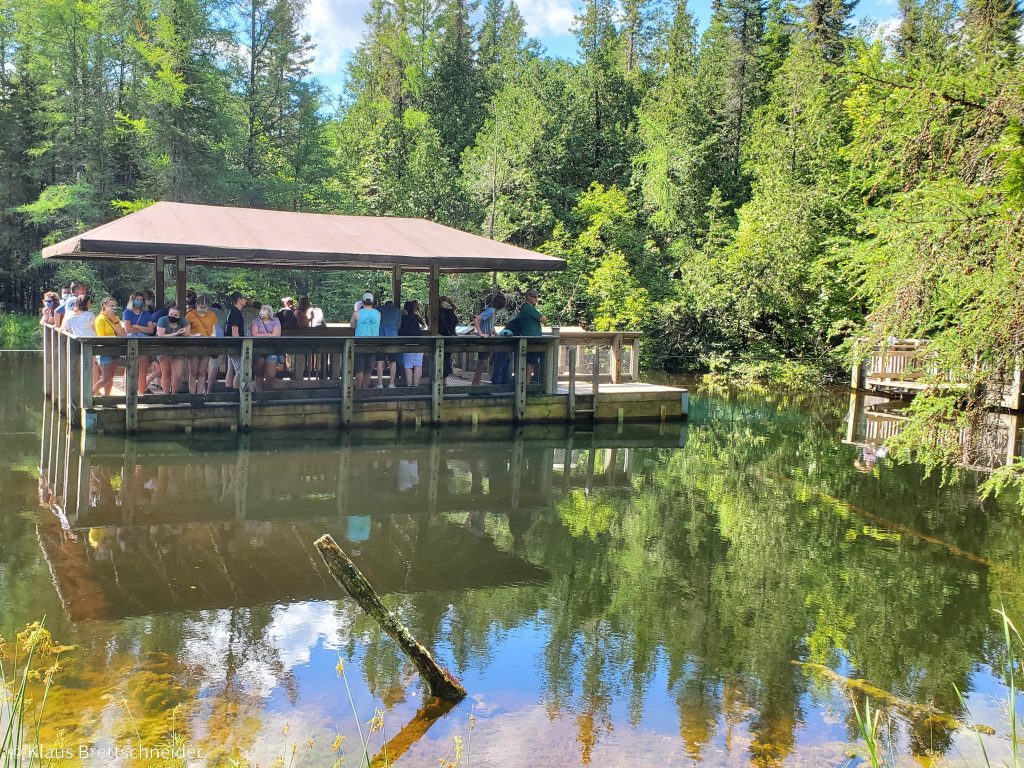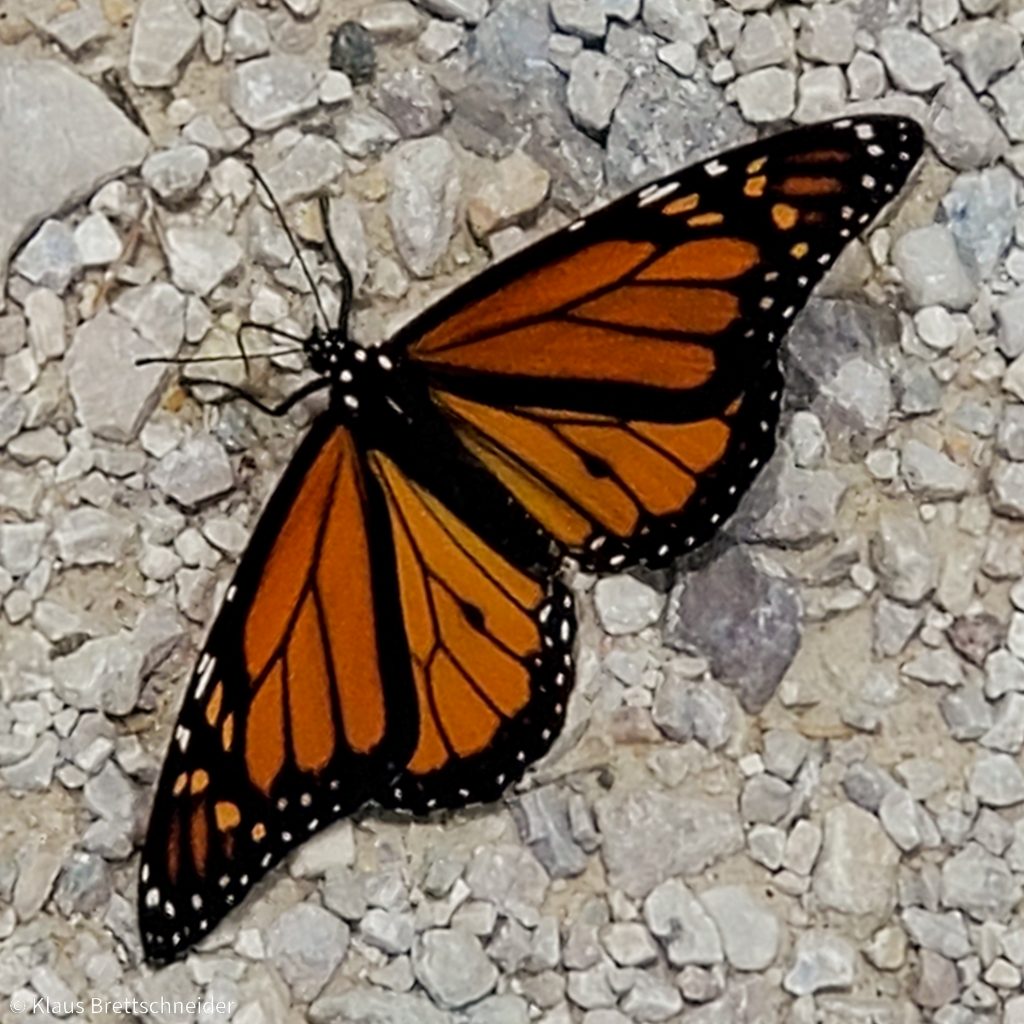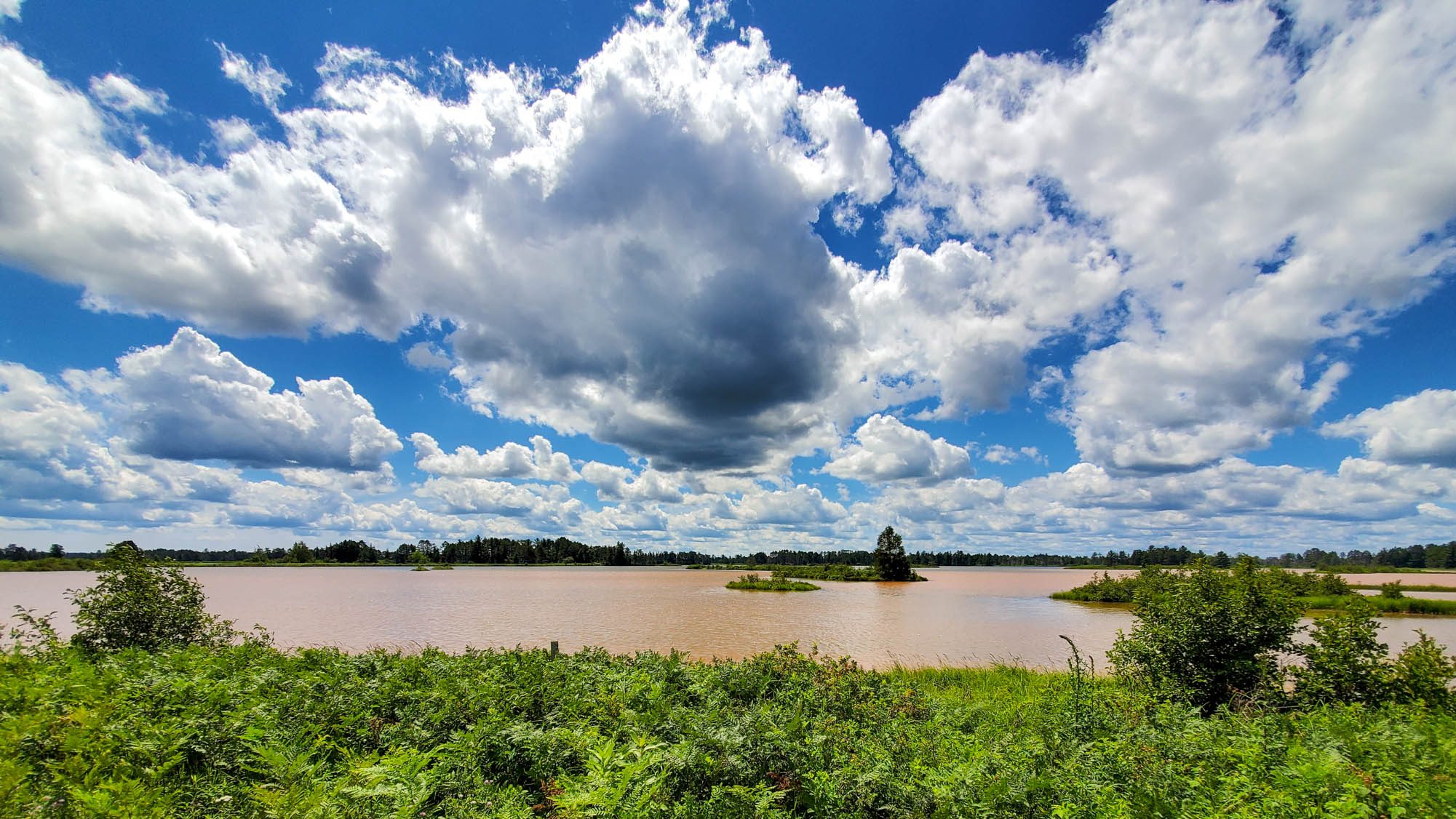The difference could not have been greater. Here the manageable spring pond, which you can navigate with an observation raft and where crowds of people line up to marvel at the rising of the spring water, and there the wide wildlife sanctuary, which you can walk or cycle through and where you only meet one or two lonely anglers.
Kitch-iti-kipi is the largest natural spring in Michigan. In order to keep it accessible to the public it is integrated into a State Park and thus made accessible to tourists. On a hand-operated observation raft, visitors can pull themselves onto the 300 by 175 feet pond and look at the turquoise bottom of the spring through windows in the ground and admire how 10,000 US gallons per minute flow or bubble into the pond. In the crystal-clear spring water one can see prehistoric tree stumps with mineral-encrusted branches and of course numerous fishes. Although information panels explain that the word Kitch-iti-kipi comes from the Ojibwe language, which was obviously spoken by the indigenous people living here at that time, the instructive main focus however is on John Ira Bellaire, who in 1920 was interested in the sinkhole with spring. He had the foresight to look through the trees and debris left behind by the loggers and see the beauty of the pond. He persuaded Frank Book, who represented the company that left the garbage behind, to sell the sinkhole and the 90 acres surrounding it to the State of Michigan for an obligatory price with the condition that the spring must be open to the public as a park forever. Certainly, he did not expect it to attract tens of thousands of tourists and if anyone thought that the current global pandemic would stop people from coming here, they were mistaken. Fortunately, we got here early enough and only had to share the source with a few guests. We then skipped the raft trip not to be in a too small of a space with too many people. Quickly long queues were building up to get on the raft, just as we were to leave the park. Too many people and as almost always some not wearing any masks. So, we decided to drive on. It is amusing to see that some people refuse to wear a mask to rebel against the rules, because they think their constitutional rights are violated. But then they join the queue, wait an hour to get on the raft and behave like obedient citizens anyway.

There are numerous legends around the spring, from a chief who died while trying to prove his love to his beloved to the magic of eternal love, which is gained by dipping a birch leaf with a drop of honey into the spring and presenting it to the loved one. Bellaire was so keen to spread these stories that today it is no longer clear whether they are really based on legends of the natives or whether John Ira Bellaire invented these stories. In any case, they achieved what Bellaire intended and his 5&10-cent store in Manistique in Michigan benefited from the increasing stream of tourists.
Only 80 kilometers northeast is the Seney Wildlife Refuge, which could not offer us a stronger contrast. One lonely vehicle stood on the visitor parking lot when we arrived there, the visitor center was closed because of COVID-19 and far and wide not a soul could be seen. The protected area serves as a breeding and resting ground for migratory birds and other wild animals. The 95,000+ acres that now appear to be wilderness, and which is supplemented by other satellite areas, is renaturalized land that was cleared, burned, neglected, drained and cultivated in the 20th century until people realized that the climate here was too harsh for agriculture.

Today the reserve consists of numerous ponds and the renaturation is still in progress. A ring road runs through a part of the area which you can drive through by car to see wildlife, or you can cycle through it like we did and stop at the viewpoints. Unfortunately we did not see any common loons, sandhill cranes or grey wolves, which should be abundant here. Probably it was not the right season, but we got to see a lot of butterflies and after half an hour of “hunting” we managed to take a photo of an American monarch with open wings.
During the whole tour we saw three anglers and were only passed by one car. No need to put on a mask, we enjoyed beautiful nature and peace and did some exercise. But the silence was over when we stopped at a campsite which is very popular with families and there were catch games every evening with a horde of children.
July 19, 2020 – Klaus
